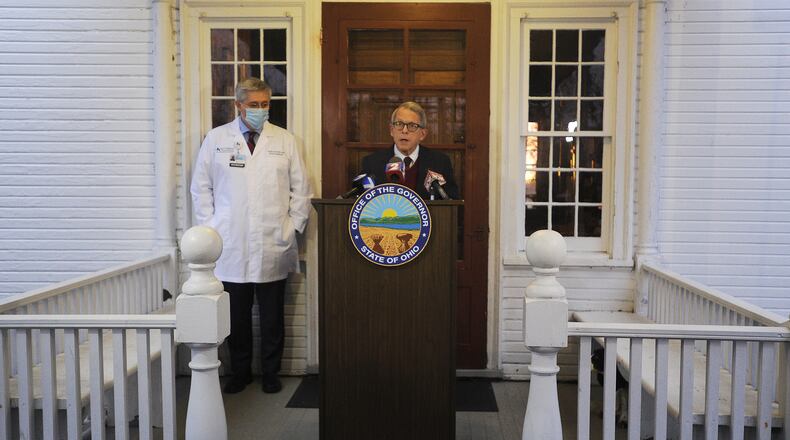Gov. Mike DeWine announced Thursday the state has seen more than 326,600 cases of COVID-19 since the onset of the pandemic in the state and nearly 5,900 deaths. Butler County has recorded more than 13,300 cases since March and more than 140 deaths due to the virus, according to the state.
As the state continues to maintain a high incidence of virus spread, the governor encourages people to stay home.
“This is very, very serious. We have to take this down,” said DeWine. ”The reason why we haven’t issued a statewide shutdown is because of the ramifications of a shutdown. Everything we do during the pandemic is a balance.”
But Thursday marked the start of a 21-day statewide curfew. Ohioans are advised to stay home from 10 p.m. to 5 a.m. Exemptions include people going to and from work, seeking medical care or getting groceries or takeout.
The governor also shared his plans for Senate Bill 311, which he calls “a disaster” if it passes the General Assembly.
“If SB 311 passes, I will veto it,” DeWine said.
“I know it’s well-intended by the General Assembly, but when you look at the ramifications, this is not a bill that can become law,” he said. “Doctors, nurses and scientists have all advised me that this bill would do great harm if it became law.”
The governor said the bill would prevent the state health department’s ability to prevent the spread of infectious diseases, and health experts told him it’s “a dangerous idea.”
Butler County remains at the Level 3, or red level, in the state’s color-coded public health advisory alert system for the 12th week. It is also one of 72 counties at that level. While Butler County was once in danger of elevating to Level 4, or purple, Franklin County became the state’s first county to reach the state’s most severe level.
To reach level 4, a county must meet at least six indicators for at least two weeks. Counties on the watch list meet at least six indicators, but have not done so for two consecutive weeks.
Montgomery, Lake and Lorain counties were placed on the watch list.
The remaining 15 counties are at Level 2, or orange, none of which are in southwest Ohio.
There had been a delay in coronavirus test reporting due to an increase of antigen testing in Ohio, the governor said.
The state double-checks the results of antigen tests before adding the results to the state’s data. With recent increases in antigen testing, the state is starting to fall behind on confirming those results. Currently, there’s a backlog of 12,000 antigen tests.
Most of those 12,000 cases are expected to be confirmed cases, DeWine said. He also noted that the state has been confirming the antigen tests since the state started using them and only recently fell behind in doublechecking.
On average, Ohio is running about 10,000 antigen tests a day.
Ohio reported 7,787 daily cases of coronavirus Thursday for a total of 326,615.
The governor noted that while the daily case number is already high, there are likely more positive cases due to the delay in reporting antigen tests.

